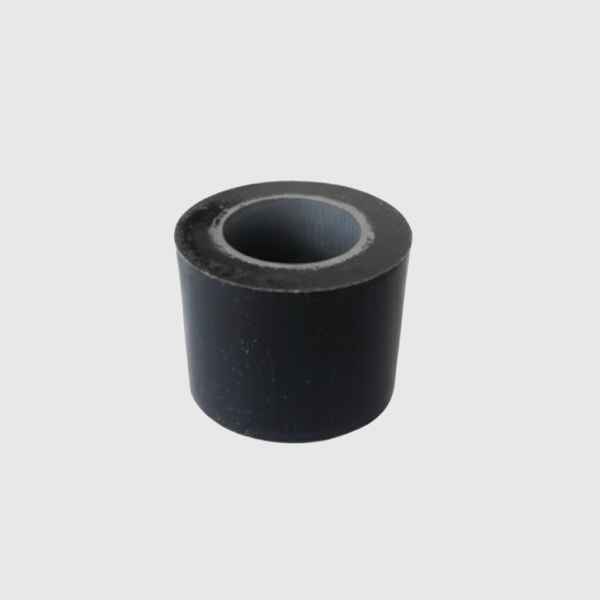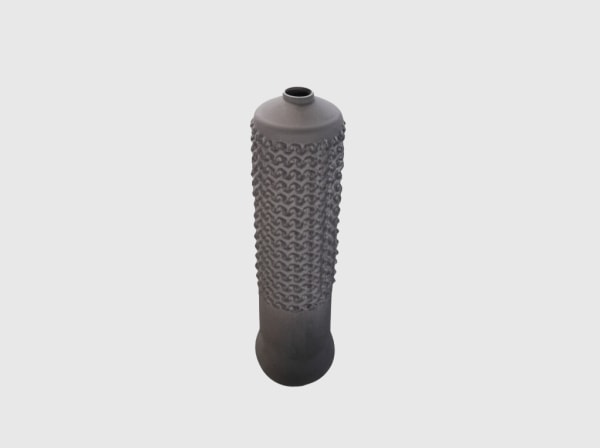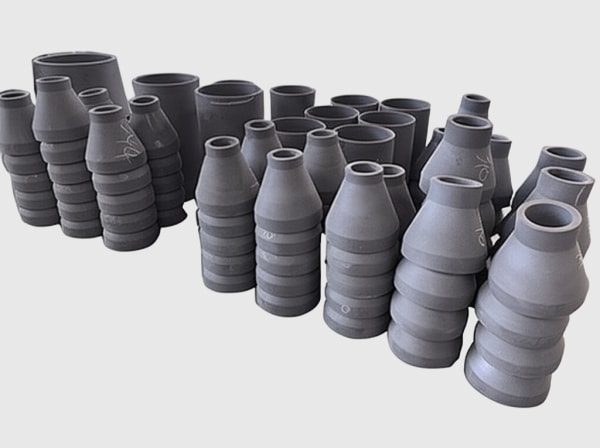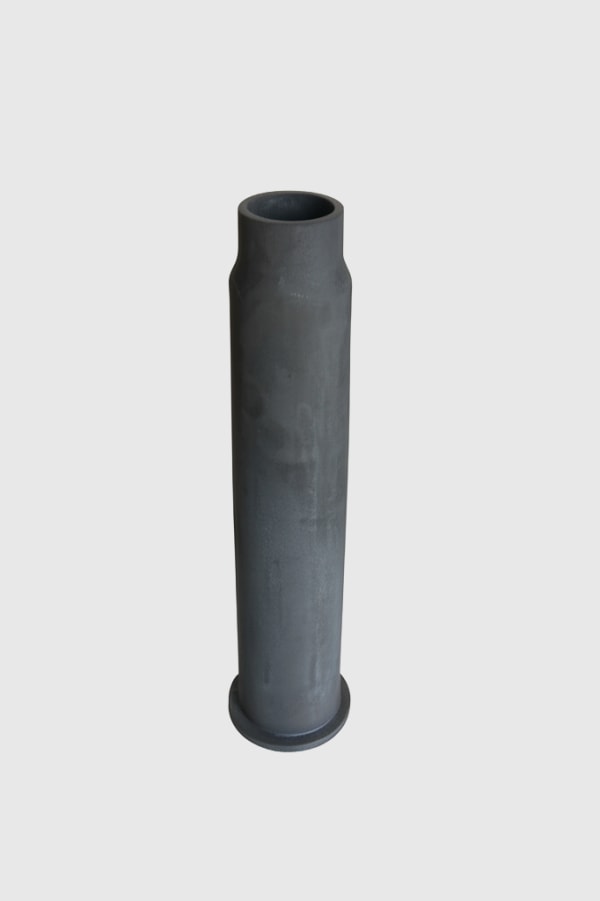SiC: Driving the Future of Automotive Technology
Introduction – Custom SiC: Essential for High-Performance Automotive
The automotive industry is undergoing a monumental transformation, driven by the imperative for greater efficiency, enhanced performance, and sustainable solutions. At the heart of this evolution lies advanced materials science, and custom silicon carbide (SiC) products are emerging as indispensable components. Silicon carbide, a high-performance technical ceramic, offers a unique combination of properties that make it exceptionally suited for the demanding environments within modern vehicles, especially in the burgeoning electric vehicle (EV) sector. Its superior thermal conductivity, high-temperature stability, exceptional hardness, and resistance to wear and chemical corrosion are enabling engineers to push the boundaries of automotive design. From power electronics that drive EVs further and charge faster, to durable components that withstand extreme operating conditions, custom SiC solutions are not just enhancing vehicle capabilities—they are fundamentally redefining them. This article explores the critical role of silicon carbide in automotive applications, delving into why custom solutions are paramount for achieving peak performance and reliability in this dynamic industry.
The EV Revolution: SiC’s Pivotal Role in Automotive Power Electronics
The global shift towards electric mobility has placed power electronics at the forefront of automotive innovation. Silicon carbide is a game-changer in this domain, significantly outperforming traditional silicon (Si) in critical EV powertrain components. Its impact is most profound in:
- Inverters: SiC-based inverters, which convert DC power from the battery to AC power for the motor, operate at higher switching frequencies with lower energy losses. This translates to increased powertrain efficiency, extending vehicle range and improving overall performance. The higher thermal conductivity of SiC also allows for smaller, lighter heat sinks, contributing to vehicle weight reduction.
- On-Board Chargers (OBCs): For OBCs, SiC enables faster charging times and greater power density. This means EV owners can charge their vehicles more quickly and conveniently. The higher efficiency of SiC chargers also reduces energy waste during the charging process.
- DC-DC Converters: SiC facilitates more efficient and compact DC-DC converters, which are essential for stepping down high battery voltages to power auxiliary systems like lighting, infotainment, and climate control. This improved efficiency contributes to overall energy savings within the vehicle.
The adoption of SiC in these power modules leads to tangible benefits: higher system efficiency, reduced size and weight of power electronic units (leading to better vehicle packaging and dynamics), and improved thermal management. As automotive manufacturers strive for longer range, faster charging, and more exhilarating performance, silicon carbide is proving to be a key enabling technology in the EV revolution. Its ability to operate at higher voltages and temperatures also paves the way for next-generation 800V (and beyond) vehicle architectures.
Beyond Powertrains: Diverse SiC Applications in Modern Vehicles
While SiC’s impact on EV powertrains is transformative, its applications in the automotive sector extend far beyond. The unique properties of this advanced ceramic lend themselves to a variety of components where durability, thermal stability, and wear resistance are critical:
- Braking Systems: Silicon carbide, particularly in the form of ceramic matrix composites (CMCs) like carbon fiber-reinforced silicon carbide (C/SiC), is used in high-performance brake discs. These brakes offer exceptional fade resistance, reduced weight compared to traditional cast iron discs, longer lifespan, and consistent performance even at extreme temperatures experienced during aggressive driving or heavy-duty use.
- Bearings and Seals: The extreme hardness and low friction coefficient of SiC make it an excellent material for wear-resistant bearings and mechanical seals in pumps (e.g., water pumps, oil pumps) and other rotating assemblies. SiC seals can prevent leaks and ensure longevity in harsh chemical and high-temperature environments.
- Sensors and Actuators: The stability of SiC at high temperatures and its semiconductor properties make it suitable for specialized sensors, such as those used for exhaust gas monitoring or in high-temperature engine components. Its mechanical robustness also benefits actuator components.
- High-Intensity Lighting Components: While LED manufacturing is a broader category, certain high-power automotive LED systems may benefit from SiC substrates or heat sinks due to their excellent thermal management capabilities, ensuring longer LED life and consistent brightness.
- Fluid Handling Components: For components handling abrasive or corrosive fluids within the vehicle, such as certain pump parts or valve seats, SiC offers superior resistance to wear and chemical attack, extending component life and reliability.
The versatility of silicon carbide allows automotive engineers to address challenges in multiple vehicle systems, contributing to overall improvements in performance, durability, safety, and efficiency. As material science continues to evolve, further innovative applications of SiC in the automotive industry are anticipated.
Why Custom Silicon Carbide is Accelerating Automotive Innovation
Standard, off-the-shelf ceramic components often fall short of meeting the precise and demanding requirements of advanced automotive applications. Custom silicon carbide solutions, tailored to specific design and performance criteria, are therefore crucial for accelerating innovation. The benefits of customization include:
- Optimized Thermal Management: Custom SiC parts can be designed with specific geometries and material grades (e.g., high-purity SSiC) to maximize thermal conductivity and heat dissipation, critical for power electronics, braking systems, and engine components. This tailored approach ensures components operate within optimal temperature ranges, enhancing efficiency and lifespan.
- Superior Wear Resistance: For applications like seals, bearings, and brake components, custom SiC formulations and surface finishes can be engineered to provide exceptional resistance to abrasion, friction, and wear, even under high loads and speeds. This leads to longer service intervals and increased reliability. Our successful case studies showcase our proficiency in developing such high-endurance components.
- Enhanced Chemical Inertness: Automotive environments can expose components to various corrosive fluids, such as fuels, coolants, lubricants, and exhaust gases. Custom SiC parts can be selected or developed to exhibit high resistance to chemical attack, preventing degradation and ensuring long-term stability.
- Precision Engineering for Complex Geometries: Modern automotive designs often require components with intricate shapes and tight tolerances. Custom manufacturing processes allow for the production of complex SiC parts that fit seamlessly into sophisticated assemblies, optimizing space and performance.
- Lightweighting Potential: While SiC is denser than some polymers, its superior strength and stiffness-to-weight ratio compared to many metals allow for the design of smaller, lighter components that can perform the same function, contributing to overall vehicle weight reduction and improved fuel efficiency or EV range.
- Tailored Electrical Properties: For semiconductor applications in power electronics, the doping and purity of SiC can be precisely controlled during custom manufacturing to achieve desired electrical characteristics, such as breakdown voltage, conductivity, and switching speed.
By opting for custom silicon carbide, automotive engineers and procurement managers can ensure that components are perfectly aligned with their application’s unique operational demands, leading to enhanced performance, improved durability, and a competitive edge in the rapidly evolving automotive market.
Key Silicon Carbide Grades for Automotive Components
Selecting the appropriate grade of silicon carbide is critical for optimizing performance and cost in automotive applications. Different manufacturing processes yield SiC materials with varying properties. Some common grades relevant to the automotive industry include:
| SiC Grade | Key Characteristics | Typical Automotive Applications |
|---|---|---|
| Reaction-Bonded Silicon Carbide (RBSiC / SiSiC) | Good mechanical strength, excellent wear and corrosion resistance, high thermal conductivity, complex shape capability, relatively lower cost. Contains some free silicon. | Mechanical seals, pump components, nozzles, wear liners, some braking system components, structural components. |
| Sintered Silicon Carbide (SSiC) | Extremely high hardness, superior wear and corrosion resistance (even to strong acids/alkalis), high-temperature strength, high purity (no free silicon), good thermal shock resistance. | High-performance mechanical seals, bearings, valve components, semiconductor processing equipment parts (used in chip manufacturing for cars), advanced braking systems. |
| Nitride-Bonded Silicon Carbide (NBSiC) | Good thermal shock resistance, good mechanical strength, resistant to molten metals. | Kiln furniture for firing automotive ceramics, some molten metal handling components if relevant in vehicle manufacturing supply chain. Less common directly in vehicles. |
| CVD Silicon Carbide (Chemical Vapor Deposition SiC) | Ultra-high purity, excellent surface finish, superior chemical resistance, often used as a coating or for thin components. | Protective coatings on other materials, high-purity semiconductor applications, mirrors for advanced optical systems (e.g., LIDAR). |
| Recrystallized Silicon Carbide (RSiC) | Excellent thermal shock resistance, high porosity (can be engineered), good high-temperature strength. | Kiln furniture, radiant tubes, burner nozzles. More relevant in manufacturing processes for automotive components rather than direct vehicle parts unless specific porosity is needed. |
The choice of SiC grade depends on a thorough analysis of the application’s requirements, including operating temperature, mechanical stresses, chemical environment, desired lifespan, and cost targets. Partnering with an experienced SiC supplier can help in selecting the optimal grade for specific automotive components.
Critical Design Considerations for Automotive SiC Parts
Designing components with silicon carbide for automotive applications requires careful consideration of its unique material properties to ensure manufacturability, performance, and reliability. Key design considerations include:
- Managing Brittleness: SiC is a hard but brittle material. Designs should avoid sharp corners and stress concentrators. Incorporating fillets and radii, and ensuring uniform load distribution, can mitigate fracture risks. Finite Element Analysis (FEA) is often employed to predict stress distributions and optimize geometry.
- Geometry and Manufacturability: While SiC can be formed into complex shapes using processes like pressing, slip casting, or extrusion before sintering, there are limitations. Wall thickness, aspect ratios, and internal features need to be designed with the chosen manufacturing process in mind. Green machining (machining before final sintering) can create more complex features, but hard machining (after sintering) is expensive and challenging.
- Thermal Management Integration: For power electronics or high-heat applications, the design must facilitate efficient heat transfer. This includes considering the interface with heat sinks, coolant channels, and overall thermal pathways. The high thermal conductivity of SiC is an advantage, but its effective utilization depends on good system-level thermal design.
- Joining and Assembly: Integrating SiC components with other materials (metals, other ceramics, polymers) in an automotive assembly requires careful thought. Techniques like brazing, shrink-fitting, or adhesive bonding are used, but differential thermal expansion between SiC and mating materials must be accounted for to prevent stress and failure.
- Surface Finish Requirements: The required surface finish depends on the application. For seals and bearings, a very smooth, lapped surface is necessary to minimize friction and wear. For other structural parts, an as-sintered or ground finish might suffice. Specifying an unnecessarily fine finish can significantly increase costs.
- Dimensional Tolerances: SiC components experience shrinkage during sintering. While tight tolerances are achievable through precise process control and post-sintering machining (grinding), overly tight tolerances increase manufacturing difficulty and cost. Designers should specify tolerances that are truly necessary for functionality.
- Load Conditions and Environment: A thorough understanding of the mechanical loads (static, dynamic, impact), thermal loads (cycling, shock), and chemical environment the SiC part will experience is crucial for material selection and design optimization.
Collaboration between automotive design engineers and SiC material experts early in the design phase is highly recommended. This ensures that the component design leverages SiC’s strengths while accommodating its specific characteristics, leading to robust and cost-effective solutions.
Achieving Precision: Tolerance, Surface Finish & Dimensional Accuracy in Automotive SiC
For many critical automotive applications, the dimensional accuracy, surface finish, and achievable tolerances of silicon carbide components are paramount for performance and reliability. SiC’s inherent hardness makes machining challenging, but advanced manufacturing and finishing techniques enable high levels of precision.
Tolerances:
- As-Sintered Tolerances: Parts produced without post-sintering machining typically have tolerances in the range of ±0.5% to ±2% of the dimension, depending on the SiC grade, size, and complexity of the part. This is often sufficient for applications where high precision is not the primary driver.
- Ground Tolerances: For applications requiring higher precision, diamond grinding is employed. Typical ground tolerances can be in the range of ±0.01 mm to ±0.05 mm (±10 to ±50 microns). Tighter tolerances, down to a few microns, are achievable for specific features or smaller parts but come at a higher cost.
Surface Finish:
- As-Sintered Surface: The surface finish of as-sintered SiC parts can vary depending on the forming method and SiC grade. It’s generally rougher than machined surfaces.
- Ground Surface: Grinding significantly improves surface finish. A typical ground SiC surface might have a roughness (Ra) of 0.4 to 0.8 µm.
- Lapped/Polished Surface: For applications demanding ultra-smooth surfaces, such as mechanical seals, bearings, or optical components, lapping and polishing processes are used. These can achieve surface roughness values (Ra) below 0.1 µm, and even down to angstrom levels for super-polished surfaces.
Dimensional Accuracy:
Achieving high dimensional accuracy involves precise control over the entire manufacturing process, from powder preparation and forming to sintering and final machining. Advanced metrology equipment, including Coordinate Measuring Machines (CMMs) and optical profilometers, is used to verify dimensions and surface characteristics, ensuring parts meet stringent automotive specifications.
Importance in Automotive Applications:
- Sealing Performance: In mechanical seals, precise dimensions and an exceptionally smooth surface finish are crucial to prevent leakage and minimize wear.
- Bearing Efficiency: Tight tolerances and fine surface finishes reduce friction and wear in SiC bearings, improving efficiency and lifespan.
- Power Electronics: In SiC-based power modules, the flatness and parallelism of substrates are important for effective thermal interfacing with heat sinks.
- Assembly Fit: Precise dimensions ensure proper fit and alignment of SiC components within larger automotive assemblies, preventing stress concentrations or operational issues.
Procurement managers and engineers should clearly define the necessary tolerances and surface finish requirements based on the functional needs of the automotive application, as over-specifying can lead to unnecessary cost increases.
Enhancing Performance: Post-Processing for Automotive SiC Components
While the intrinsic properties of silicon carbide are exceptional, various post-processing treatments can further enhance its performance, durability, and suitability for specific automotive applications. These steps are often crucial for meeting tight tolerances, achieving desired surface characteristics, or improving integration with other components.
Common post-processing techniques for SiC include:
- Grinding: Due to SiC’s extreme hardness, diamond grinding is the primary method for achieving precise dimensions and improving surface finish after sintering. Various grinding techniques (surface grinding, cylindrical grinding, centerless grinding) are used depending on the part geometry. This is essential for parts like bearing races, seal faces, and precision shafts.
- Lapping and Polishing: For applications requiring ultra-smooth, low-friction surfaces (e.g., mechanical seals, high-performance bearings, optical components), lapping and polishing are employed. These processes use progressively finer abrasive slurries to achieve mirror-like finishes and extremely tight flatness or parallelism tolerances.
- Edge Chamfering/Radiusing: To reduce the risk of chipping on brittle SiC components and to improve handling safety, edges are often chamfered or radiused. This can be done through specialized grinding or other abrasive methods.
- Cleaning: Thorough cleaning processes are essential to remove any contaminants, machining residues, or coolants from the SiC surface, especially for high-purity applications in semiconductor manufacturing or sensitive automotive sensors.
- Annealing: In some cases, a post-sintering or post-machining annealing step might be used to relieve internal stresses induced during manufacturing, potentially improving the mechanical integrity of the component.
- Surface Treatments/Coatings (Less Common for Bulk SiC): While bulk SiC itself is highly resistant, in some niche automotive applications, specialized coatings (e.g., diamond-like carbon – DLC) might be applied to further modify surface properties like friction or to provide an additional barrier layer. However, more commonly, SiC itself is used as a coating (e.g., CVD SiC) on other substrate materials.
- Metallization: For joining SiC to metallic components in automotive assemblies (e.g., in power electronic modules where SiC substrates are bonded to baseplates), metallization layers (e.g., using active metal brazing techniques) are applied to the SiC surface to enable a strong, hermetic bond.
The selection of appropriate post-processing steps is determined by the specific requirements of the automotive application, including dimensional tolerances, surface finish specifications, mechanical load conditions, and assembly methods. Each step adds to the cost and lead time, so careful consideration is necessary to balance performance enhancement with economic viability.
Overcoming Challenges in Automotive SiC Implementation
Despite its numerous advantages, the implementation of silicon carbide in automotive applications is not without challenges. Understanding and mitigating these can lead to successful and cost-effective integration.
- Brittleness and Fracture Toughness: SiC is inherently brittle, meaning it has low fracture toughness compared to metals. This makes it susceptible to chipping or catastrophic failure if subjected to high impact loads or excessive tensile stress.
- Mitigation: Careful component design to minimize stress concentrations (e.g., rounded edges, fillets), compressive loading designs, selection of tougher SiC grades (like some RBSiC variants or CMCs), and robust packaging or mounting solutions. FEA analysis is critical for predicting stress.
- Machining Complexity and Cost: The extreme hardness of sintered SiC makes it difficult and expensive to machine. Diamond tooling and specialized grinding processes are required, which can significantly add to the component cost, especially for complex geometries or very tight tolerances.
- Mitigation: Design for manufacturability (near-net-shape forming to minimize machining), utilize green machining where feasible, optimize tolerances to what is strictly necessary, and partner with experienced SiC manufacturers with advanced machining capabilities.
- Cost of Raw Materials and Processing: High-purity SiC powders and the energy-intensive sintering processes contribute to a higher material cost compared to traditional materials like steel or aluminum.
- Mitigation: Focus on applications where SiC’s performance benefits justify the cost (e.g., significant efficiency gains in EVs, extended life in wear parts). Volume production is gradually reducing costs. Explore grades like RBSiC which can be more cost-effective for certain applications. Evaluate total cost of ownership, including longer lifespan and reduced maintenance.
- Joining SiC to Other Materials: Differences in coefficient of thermal expansion (CTE) between SiC and metals can create significant stress at joints during thermal cycling, potentially leading to failure.
- Mitigation: Use of compliant interlayers, graded CTE materials, advanced brazing alloys, or mechanical clamping designs that accommodate thermal mismatch. Careful selection of mating materials and joint design is crucial.
- Thermal Shock Resistance: While generally good, extreme and rapid temperature changes can still pose a risk for some SiC grades, especially if internal flaws are present.
- Mitigation: Select SiC grades with excellent thermal shock resistance (e.g., some SSiC, RSiC types). Design components to minimize thermal gradients. Ensure high material quality with minimal internal defects.
- Supplier Expertise and Customization Capability: Finding suppliers with deep technical expertise in SiC materials science, application engineering, and consistent, high-quality custom manufacturing can be a challenge.
- Mitigation: Thoroughly vet potential suppliers. Look for proven track records, R&D capabilities, robust quality control systems, and a willingness to collaborate on custom solutions. This is where specialized partners become invaluable.
Addressing these challenges requires a collaborative approach between automotive engineers, material scientists, and SiC manufacturers. Early supplier involvement in the design process is key to optimizing performance, manufacturability, and cost.
Selecting Your Strategic Partner: Choosing a Custom SiC Supplier for Automotive Needs
The success of integrating custom silicon carbide components into automotive systems heavily relies on the capabilities and expertise of your chosen supplier. Selecting the right strategic partner goes beyond just sourcing a material; it’s about collaborating with a team that understands the nuances of SiC technology and the specific demands of the automotive industry. Key factors to consider include:
- Technical Expertise and Material Knowledge: The supplier should possess deep knowledge of various SiC grades, their properties, and their suitability for different automotive applications. They should be able to provide guidance on material selection and design optimization.
- Customization Capabilities: Automotive applications often require unique geometries and performance characteristics. Look for a supplier with proven experience in developing and manufacturing custom silicon carbide products tailored to specific needs, from prototyping to large-scale production.
- Manufacturing Prowess and Quality Control: Assess their manufacturing facilities, process controls (e.g., ISO certifications like ISO 9001, IATF 16949 if applicable), and quality assurance systems. Consistency in material properties and dimensional accuracy is critical for automotive components.
- Research and Development Strength: A supplier committed to R&D is more likely to offer innovative solutions and stay ahead of evolving material advancements.
- Understanding of Automotive Standards: Familiarity with automotive industry requirements, including durability testing, reliability standards, and supply chain expectations, is a significant advantage.
- Scalability and Supply Chain Reliability: The supplier must be able to scale production to meet automotive volume demands and ensure a stable, reliable supply chain.
Speaking of sourcing and advanced capabilities, it’s noteworthy that the hub of China’s silicon carbide customizable parts manufacturing is situated in Weifang City. This region has become a powerhouse, home to over 40 silicon carbide production enterprises of various sizes, collectively accounting for more than 80% of China’s total silicon carbide output.
Within this dynamic ecosystem, companies like Sicarb Tech play a pivotal role. Since 2015, we have been instrumental in introducing and implementing advanced silicon carbide production technology, assisting local enterprises in achieving large-scale production and significant technological advancements. As a witness to the emergence and ongoing development of this local SiC industry, Sicarb Tech brings a unique perspective and deep-rooted expertise.
For automotive clients, this translates to more reliable quality and supply assurance. Sicarb Tech possesses a domestic top-tier professional team specializing in the customized production of silicon carbide products. Our support has benefited over 71 local enterprises through our extensive array of technologies spanning material science, process engineering, design, measurement, and evaluation. This integrated approach, from materials to final products, enables us to meet diverse and complex customization needs for automotive applications, offering higher-quality, cost-competitive custom SiC components from China.
Furthermore, if your strategic goals include establishing local manufacturing capabilities, Sicarb Tech is uniquely positioned to assist. We can provide technology transfer for professional silicon carbide production, along with comprehensive turnkey project services. This includes factory design, procurement of specialized equipment, installation and commissioning, and trial production, enabling you to own a professional SiC products manufacturing plant with assured technology transformation and a favorable input-output ratio.
Choosing a supplier like Sicarb Tech means partnering with an entity that not only delivers high-quality custom SiC components but also offers a pathway to technological self-sufficiency and innovation within the automotive sector.
Understanding Cost Drivers and Lead Times for Custom Automotive SiC
For procurement managers and engineers in the automotive sector, understanding the factors that influence the cost and lead times of custom silicon carbide components is essential for effective budgeting, project planning, and supplier negotiations. Several key elements contribute to the final price and delivery schedule:
Key Cost Drivers:
- Material Grade and Purity: Higher purity SiC powders (e.g., for SSiC or semiconductor applications) are more expensive to produce than technical grades used in some RBSiC formulations. The specific grade chosen significantly impacts raw material costs.
- Complexity of Design and Geometry: Intricate shapes, thin walls, complex internal features, or very large components require more sophisticated tooling, longer forming cycles, and potentially more complex sintering processes, all of which increase costs.
- Dimensional Tolerances and Surface Finish: The tighter the tolerances and the finer the required surface finish (e.g., lappe





